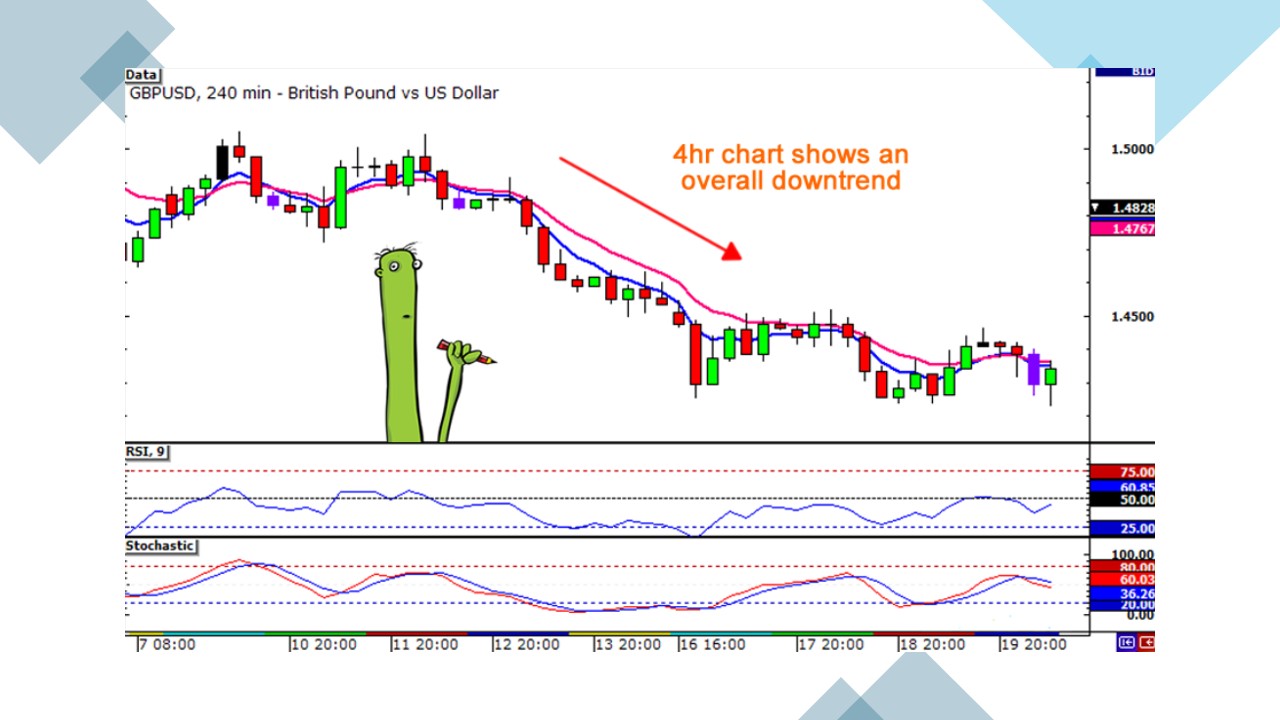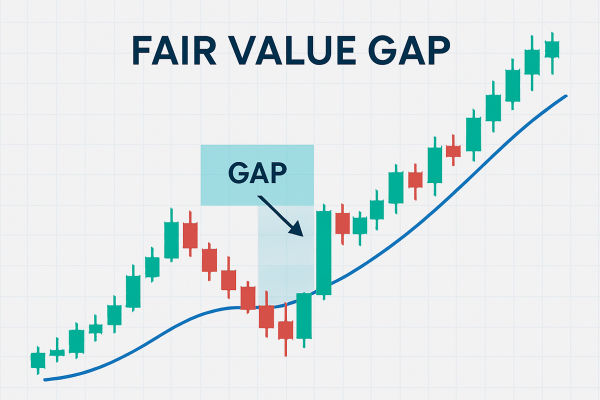In early 2018. the EUR/USD was particularly volatile due to shifts in European and US monetary policy. One day trader, using a combination of moving averages and the rsi indicator, bought the EUR/USD after spotting a support level near 1.2000. As the pair quickly rose to 1.2200 over the course of a few hours, the trader took profits, netting a significant return. While the trade itself was relatively simple, the trader's ability to act quickly and use technical analysis to read the market was key to their success.
Unlike long-term investors, day traders focus on capturing short-term price fluctuations, making profits from relatively small movements in the market. In such a fast-paced environment, success often comes down to the ability to make quick, informed decisions and accurately read the market's direction. As illustrated by this example, technical analysis and a sharp market sense are crucial to achieving success in day trading.
Forex day trading is not just about having a strategy—it's about being agile, dynamic, and disciplined. Traders need to be alert to market shifts and react quickly, while also maintaining a clear, strategic approach. In the following sections, we'll guide you through the essential strategies, common pitfalls, and tips to help you thrive in this dynamic market.
What is Forex Day Trading?
Forex day trading involves buying and selling currency pairs within the same trading day, with the goal of capitalising on short-term price movements. Unlike long-term investing, where assets are held for weeks, months, or even years, day traders close all their positions before the market closes, ensuring no exposure to overnight risk. This fast-paced style of trading offers opportunities for profits, but it requires a sound strategy, sharp decision-making skills, and a solid understanding of the market.

Key benefits of day trading include the potential for high returns, flexibility, and the ability to work from anywhere. By focusing on short-term trades, day traders can make profits in both rising and falling markets, taking advantage of volatility and small price fluctuations. It's an appealing choice for those who prefer a more active role in managing their investments and enjoy the excitement of fast-paced, real-time trading.
When compared to other trading styles, such as swing or position trading, day trading is much more intense and demands more attention. Swing traders typically hold positions for several days or even weeks, while day traders close out all positions before the market ends each day. This means day trading involves more frequent decision-making, faster analysis, and more time spent in front of the screen.
Essential Strategies for Forex Day Trading
To succeed as a forex day trader, it's crucial to adopt the right strategies. While no single approach guarantees success, here are three popular strategies that traders use to profit from short-term currency fluctuations.
Scalping is one of the most fast-paced day trading strategies. It involves making dozens, if not hundreds, of trades in a single day, with each trade aimed at capturing tiny price movements. Scalpers typically hold positions for only a few minutes and seek to profit from very small changes in the currency pair's price. This method requires a lot of focus, speed, and precision, as well as a broker with low spreads to maximise profitability on small price movements.
Trend following is a strategy where traders try to identify and profit from the prevailing market trend. If a currency pair is moving in a clear direction, whether up or down, trend followers look to enter trades that align with this direction, aiming to profit as the price continues to move in the same trend. This strategy requires a good understanding of technical analysis, as traders use indicators such as moving averages or the Relative Strength Index (RSI) to determine the strength and direction of the trend.
Range trading, on the other hand, involves identifying price levels where a currency pair is bouncing between a defined support and resistance level. In stable markets, range traders buy near the support level and sell near resistance, profiting from the market's oscillation between these two levels. This strategy works best in markets where there is no strong trend, and the currency pair is moving sideways. Range traders use technical indicators, like Bollinger Bands, to spot when prices are at the extremes of the range.
Common Mistakes to Avoid in Day Trading
Despite the potential rewards, day trading is not without its risks, and there are several common mistakes that new traders often make. Being aware of these pitfalls and taking steps to avoid them can greatly improve your chances of success.
Overtrading is one of the most frequent mistakes made by beginners. Driven by the desire to make quick profits, new traders often trade too frequently or take on excessive risk. Overtrading can lead to significant losses, especially if a trader fails to assess the market carefully before each trade. The key to success is patience and making well-thought-out trades, rather than trying to catch every small market movement.
Another major mistake is ignoring risk management. Many traders focus on making profits but forget to put in place strategies to limit their potential losses. Without risk management techniques, such as stop-loss orders, traders can lose a substantial portion of their capital in just a few poor trades. A good trader knows how much they are willing to risk on each trade and uses stop-loss orders to automatically close a position if the market moves against them.
Finally, the lack of a clear Trading plan is a major stumbling block for many day traders. Trading without a plan leads to emotional decisions, impulsive trades, and inconsistent results. A successful day trader will set clear entry and exit points for each trade, define risk-reward ratios, and stick to their plan even when emotions like fear or greed arise.
Tips for Success as a Forex Day Trader
Becoming a successful forex day trader takes discipline, patience, and a solid approach to both strategy and risk management. Here are a few tips to help you stay on track and increase your chances of success.
First, stick to a routine and stay disciplined. Developing a consistent trading schedule will help you focus and avoid making impulsive decisions. Many traders find that trading during specific hours of the day, when market activity is at its peak, is the best time to take advantage of price movements. Setting clear daily goals can also help keep you motivated and focused on your trading objectives.
For example, Kathy Lien, a renowned forex trader and currency strategist, often stresses the importance of sticking to a trading routine. In interviews, she has mentioned how creating a structured schedule and knowing when to trade has been pivotal to her success. By focusing on high-impact trading sessions, such as during the London and New York overlap, she maximised her potential for profit. Having a clear start and end to her trading day helped her avoid unnecessary distractions and emotional decisions.
Next, use proper technical analysis tools to inform your decisions. Day traders rely heavily on Chart Patterns, indicators, and oscillators to predict price movements. Tools such as moving averages, the MACD (Moving Average Convergence Divergence), and the RSI can provide useful insights into the strength of market trends and potential entry and exit points. The more familiar you become with these tools, the better equipped you will be to make informed decisions.
Lastly, manage risk with stop-loss orders. A stop-loss order allows you to set a predetermined price at which your trade will automatically close if the market moves against you. This helps protect your capital from unexpected market moves and prevents emotional trading decisions when a trade goes unfavourably. Successful traders understand that it's not just about making profits but also about protecting their capital and managing losses effectively.
In conclusion, day forex trading offers significant opportunities for profit, but it comes with challenges that require knowledge, strategy, and discipline. By understanding the basics of day trading, employing sound strategies, avoiding common mistakes, and using effective risk management techniques, you can set yourself up for long-term success in the fast-paced world of forex trading.
Disclaimer: This material is for general information purposes only and is not intended as (and should not be considered to be) financial, investment or other advice on which reliance should be placed. No opinion given in the material constitutes a recommendation by EBC or the author that any particular investment, security, transaction or investment strategy is suitable for any specific person.







